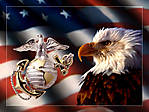Please excuse me for the (probably) self-serving thread title. But I thought a Thread with a title like that might draw some new people (like myself) into the wonderful and (I expect) exciting world of Ship modeling!! I have personally had so much support and authoritative information given me by the great members here in the 'Warship Forum' at Armorama, that I just HAD to make the attempt to lure more people over to 'check it out'!!
Hope you more experienced 'swabbies' don't mind!?!
Soooo, to start this whole thing off, I have a question for all of you more learned buggers!
I have been doing some fairly decent research lately to enlighten myself to the 'floaty' side of things, and have been trying to form some 'noob' opinions.......(believe me guys, you're in for it. But you only have yourselve's to blame for welcoming me so warmly...hehe).
Anyway, here it goes.
The 'should-have-been' Montana Class Battleships....should they have been built? Or were we smarter to have instead focused (as we did) on the Carrier Class group of ships since apparently the 'Air' portion of the Seabourne battle was the decisive(?) factor?
Also, as a follow up question. If the Montana was indeed built, and was fortunate/unfortunate enuf to come into direct contact with a ship like the Japanese Yamato...which do you think would come out the Victor in a direct confrontation? The Yamato did indeed have the larger guns, (18-inch)correct? But the Montana Class was supposed to have twelve(12) sixteen inch guns, so who would have been heavier armed??
Want another Q?
How much more protection did 'torpedo buldge's' provide? Meaning, could they take a direct torpedo hit without damage? Or were they designed to limit the damage to the 'thermal'(?) space between the buldge and the inner hull proper?
Is that enough 'noob' questions for now?...........good.
Thx in advance for your continued patience with someone who is trying to embrace 'floaty' things. :-)
And to all you new visitors.......listen to these guys!
Tread.






























